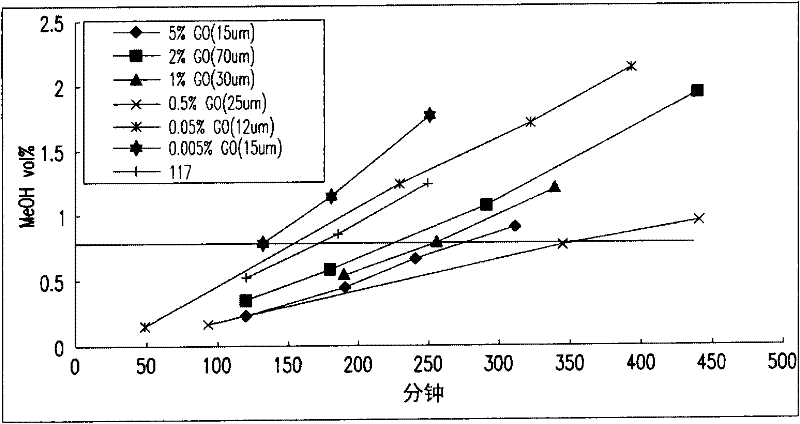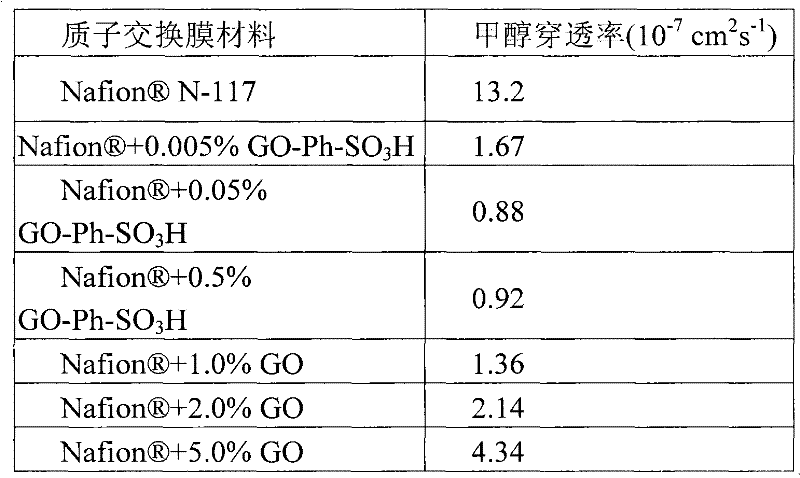Low permeability composite proton exchange membrane including organic-inorganic hybrid
A proton exchange membrane, inorganic technology, used in fuel cell parts, separators/films/diaphragms/spacers, fuel cells, etc., can solve the problem of power generation efficiency decline, fuel cell output voltage drop, short battery life, etc. problem, to achieve the effect of blocking the penetration of methanol
- Summary
- Abstract
- Description
- Claims
- Application Information
AI Technical Summary
Problems solved by technology
Method used
Image
Examples
Embodiment Construction
[0017] The proton exchange membrane proposed in this embodiment is a kind of organic-inorganic composite proton exchange membrane mixed with organic materials and inorganic materials, which includes about 0.001wt% to 10wt% of graphene derivatives with two-dimensional structure as inorganic material, and 99.999wt%-90wt% of polymer materials with sulfonate groups are used as organic materials. The graphene derivatives herein are selected from the group consisting of graphene oxide, graphene sulfide, graphene hydroxide, graphene carbonate, graphene nitride and graphene sulfonate. The organic material is, for example, a sulfonated polyfluoropolymer (PTFE-PFSA copolymer) or a sulfonated hydrocarbon polymer such as s-PEEK, s-PPO, s-PI, s-PES or s-PPBP.
[0018] In an embodiment of the present invention, the content of sulfonated graphene in the organic-inorganic hybrid proton exchange membrane is 0.005 wt%, and the content of organic materials is 99.995 wt%. In another embodiment, ...
PUM
 Login to View More
Login to View More Abstract
Description
Claims
Application Information
 Login to View More
Login to View More - R&D
- Intellectual Property
- Life Sciences
- Materials
- Tech Scout
- Unparalleled Data Quality
- Higher Quality Content
- 60% Fewer Hallucinations
Browse by: Latest US Patents, China's latest patents, Technical Efficacy Thesaurus, Application Domain, Technology Topic, Popular Technical Reports.
© 2025 PatSnap. All rights reserved.Legal|Privacy policy|Modern Slavery Act Transparency Statement|Sitemap|About US| Contact US: help@patsnap.com



